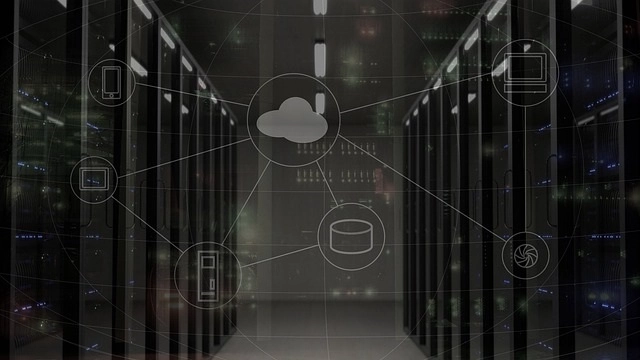Fortinet Acquires Next DLP Strengthens its Top-Tier Unified SASE Solution
Read the release
Protecting a company’s IT environment and data resources is critically important in today’s threat landscape, and companies need to address the risks of external and internal threats to data security and integrity.
Consequently, many organizations adopt one or more cybersecurity frameworks to address the challenges of protecting their computing environment.
Zero Trust Network Access (ZTNA) and Secure Access Service Edge (SASE) are two cybersecurity frameworks that are becoming increasingly popular approaches for protecting an IT environment. The approaches focus on different aspects of cybersecurity and have several major differences in what they protect and how the protection is implemented.
However, ZTNA and SASE have complementary characteristics that allow them to work together to provide enhanced security.
We’ll examine the differences between these two frameworks and discuss how they complement each other. We’ll also see how a data loss prevention solution supports both cybersecurity approaches.
In this article:

The core concept of the Zero Trust security model is that trust should never be assumed by default when an entity requests access to IT resources. This lack of trust and subsequent verification and authentication are necessary regardless of where the request originates.
The same degree of authentication is required for entities inside and outside of the corporate network.
Gaining access to the network does not guarantee trust throughout an interaction with IT resources. Authentication and verification need to be performed at each step of the interaction as different data assets or systems are accessed.
Strict identity verification procedures and least privilege access are enforced for all users, devices, and applications inside and outside the network.
The primary focus of Zero Trust is protecting resources through the continuous verification and authentication of all entities accessing the IT environment. Entities that have already gained a level of access need additional authentication as they move through the infrastructure.

The SASE security model is designed to address the complexities of protecting cloud-based IT resources. SASE builds on security services such as secure web gateways, ZTNA, and firewall-as-a-service to implement a cloud-native solution for secure network access.
Combining multiple security components into a unified solution facilitates their use by companies safeguarding cloud environments.
SASE focuses on centralizing network management so security policies can be applied consistently across the complete network. It is a context-aware framework that protects data assets through the real-time integration of networking and security functions. As with ZTNA, SASE treats all users the same, no matter where a connection attempt originates.
The integration of Zero Trust within SASE ensures that each access request is thoroughly verified, treating all network traffic as potentially hostile. This approach is particularly valuable in today's distributed work environments, where traditional perimeter-based security models are no longer sufficient. SASE's cloud-native architecture enables scalable, flexible security that adapts to the evolving needs of modern enterprises.
These two frameworks are constructed with the following core components and technologies.
ZTNA’s core components include:
SASE’s employs these core components:

Zero Trust and SASE display several differences that must be understood when selecting a framework to protect a computing environment.

Combining ZTNA and SASE offers numerous advantages for organizations seeking robust security solutions. This integration provides secure cloud access, effective network segmentation, and mitigation of insider threats.
ZTNA, a key component of SASE, establishes a secure access boundary around applications, verifying user identity and context before granting network access. This approach follows the principle of "Trust no one, verify all," emphasizing rigorous identity verification from multiple perspectives.
Networks built on ZTNA principles do not confer trust until systems authenticate users, limiting their ability to freely navigate network infrastructure.
The blend of ZTNA and SASE also offers benefits such as protecting internal applications, reducing account breach risks, and ensuring compliance. This comprehensive approach enhances overall network security and addresses the challenges posed by cloud-based SaaS tools and remote or hybrid work environments.
Organizations should prioritize implementing Zero Trust principles in the short term to enhance security for remote workforces accessing both cloud and on-premises services. Simultaneously, they should consider future networking projects through the lens of creating an environment that supports SASE implementation down the road.
Rather than viewing SASE and Zero Trust as competing approaches, they should be seen as complementary solutions that together provide a comprehensive security strategy. Most organizations are advised to start with Zero Trust implementation before transitioning to SASE as a long-term goal.
This approach aligns with industry trends, as it is projected that by 2025, 80% of enterprises will have adopted a SASE framework to unify web, cloud services, and private application access, representing a significant 400% increase from 2021 levels.
A data loss prevention (DLP) solution such as the Reveal Platform by Next offers improved data protection when used in conjunction with ZTNA and SASE. DLP platforms support the Zero Trust approach by verifying data usage against a company’s data handling policy.
DLP restricts the inappropriate use of data to safeguard valuable resources from external and internal threats. It offers enhanced protection against deliberate or accidental misuse of sensitive information.
Contact Next andd schedule a Reveal demo to see the valuable additional data protection provided by this advanced data loss prevention solution.
Yes, Zero Trust is necessary when implementing SASE to protect an environment. Zero Trust is one of the foundational components of SASE and is used to ensure authenticated access to cloud resources.
A Zero Trust approach protects an organization from threat actors who may have gained access to a cloud environment but are restricted from accessing sensitive resources.
Zero Trust is different from a VPN because it continues to verify and authenticate interactions with the IT environment after a user has gained access to the network. When using a VPN, users are verified when entering the network but have a degree of freedom to perform activities and access resources not available in a Zero Trust environment.
Several disadvantages may influence an organization’s decision to implement Zero Trust network access. These disadvantages include:

Blog

Blog

Blog

Blog

Resources

Resources

Resources

Resources

